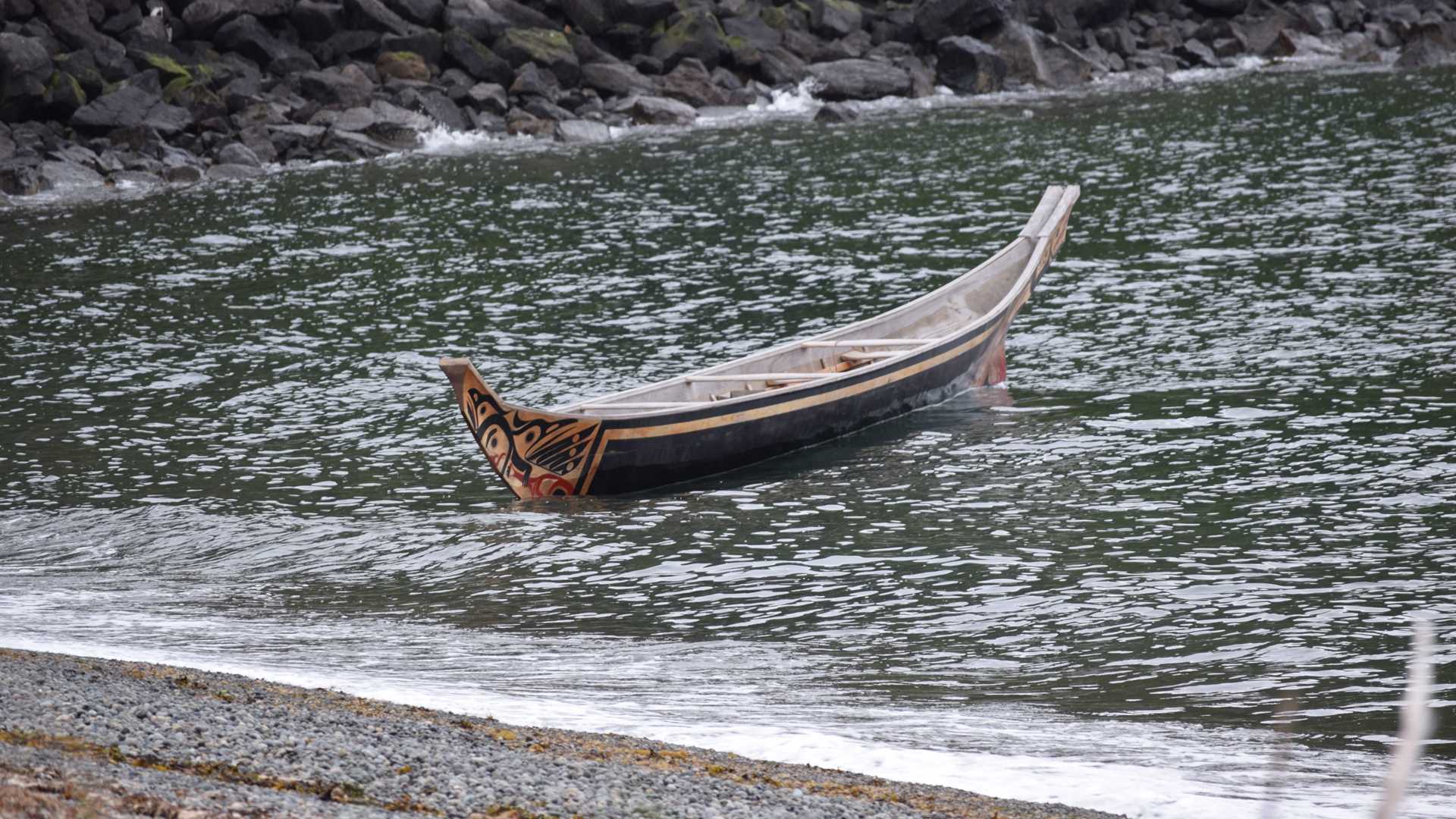The National Geographic Sea Bird crossed the Hecate Strait leaving late in the evening last night due to rough seas. Captain Davis chose a southern departure point from mainland British Columbia, keeping the storm seas on our rear starboard quarter of the vessel.
We were happy to find ourselves in calmer seas this morning as we docked at a pier in the small town of Queen Charlotte City. After a hearty breakfast we boarded school buses and went to the village of Kay Llnaguay. There we visited the Haida Heritage Cultural Center and museum.
Our local guides showed us the temporary exhibit done by Alfie Collinson. He created works of art from Argillite stone or more commonly known as slate. He also used materials like elk horn, abalone, cedar bark and ivory. We also saw a beautiful canoe handcrafted by the well-known artist Bill Reed, the stunning 2,000 pound canoe could hold 20 people!
We saw many beautiful totem poles including the 3 types: the frontal, mortuary and memorial poles. The main carver and his apprentices worked on a totem pole for sometimes a year or longer.
In the afternoon we ventured out to the Spirit Lake Trailhead. We divided up into guided groups. Some chose a photography hike and went with our National Geographic photographer,
Others went on a faster paced walk to take in the beauty of the temperate rain forest and the lake views. The trail was a well-groomed gravel path with several wooden bridges. The size of the Sitka Spruce and the Western Hemlocks that made up this lush green forest was truly daunting.
We were fortunate to have Elsie Gale, a First Nations Haida cultural specialist joined us for our time in Haida Gwaii.
She informed us that the Haida people have a matrilineal society. According to Elsie they have created a balance between female and male roles that have allowed them to maintain their cultural and diverse identity within the modern world.









